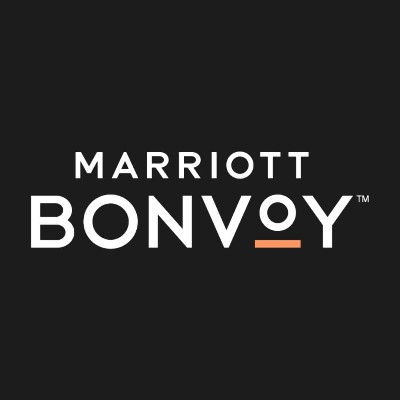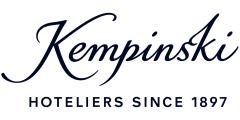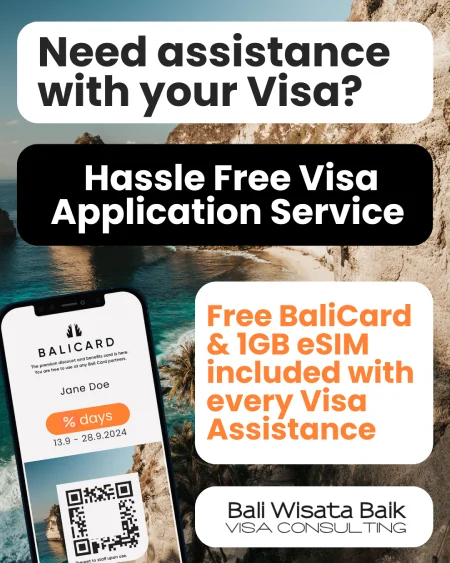Things to Do in Bali
What are the Visa Requirements for Irish Citizens?
Enter into Indonesia / Bali with an Irish Passport
Irish can now travel to Indonesia and purchase a Visa on Arrival.
Visit Visa for Bali, Indonesia (also known as Visa on Arrival, VoA & e-VoA)
FAQ B1 Visit Visa / Visa on Arrival - B1 Visa
You Have 3 Options to Apply for Your Indonesian Tourist Visa / Visa on Arrival
⚠️ Beware of scam websites. We recommend using only the links we provide
1. ONLINE — Apply with Assistance from Our Trusted Visa Agent
- Document verification to avoid errors or rejections
- Full application service
- Customer support
- 🎁 FREE Welcome Gift:
Each applicant receives a FREE BaliCard Discount Card and a FREE 1GB Travel eSIMUSD 35 - With this e-visa you can use the faster e-gates at the immigration (if your passport ibiometrixc)
Start My Application
2. ONLINE — Self-Service via the Official Immigration Website
Apply at the Official Immigration Website
3. IN PERSON — At the Airport or Harbour Upon Arrival in Indonesia
If you haven’t purchased the e-VoA before your trip, you can still buy your Visa at designated VoA counters in the arrival halls of Indonesian international airports or seaports.
Be prepared for potential queues and ensure you have a valid credit card or cash (EUR, USD, AUD, GBP).
Note: You cannot use the e-Gates if you obtain your Visa on arrival in person.
Visa on Arrival for Bali & Indonesia
Following nationalities can obtain a Visa on Arrival, VoA
| Tourist Visa Countries - B Type | ||
|---|---|---|
| Albania | Andorra | Argentina |
| Armenia | Australia | Austria |
| Azerbaijan | Bahrain | Belarus |
| Belgium | Bosnia Herzegovina | Brazil |
| Bulgaria | Canada | Chile |
| China | Croatia | Cyprus |
| Czech Republic | Denmark | Ecuador |
| Egypt | Estonia | Finland |
| France | Germany | Greece |
| Guatemala | Hungary | Iceland |
| India | Ireland | Italy |
| Japan | Jordan | Kazakhstan |
| Kenya | Korea South | Kuwait |
| Latvia | Liechtenstein | Lithuania |
| Luxembourg | Maldives | Malta |
| Mauritius | Mexico | Monaco |
| Mongolia | Morocco | Mozambique |
| Netherlands | New Zealand | Norway |
| Oman | Palestine | Papua New Guinea |
| Peru | Philippines | Poland |
| Portugal | Qatar | Romania |
| Russia | Rwanda | Saudi Arabia |
| Serbia | Seychelles | Slovakia |
| Slovenia | South Africa | Spain |
| Suriname | Sweden | Switzerland |
| Taiwan | Tanzania | Tunisia |
| Turkey | Ukraine | United Arab Emirates |
| United Kingdom | United States | Uzbekistan |
| Vatican | Venezuela | |
Following Nationalities can enter into INdonesia WITHOUT applying for a Visa before arrival (Visa Free Entry - stay for max. 30 days!) - Travelers will receive an A1 Visa upon arrival.
Travelers who stay longer than 30 days must either apply for a B Type (+ extension) or C Type Visa
- Brunei Darussalam
- Cambodia
- Colombia
- East Timor
- Hong Kong
- Laos
- Macao
- Malaysia
- Myanmar
- Philippines
- Singapore
- Suriname
- Thailand
If your nationality is not listed, you need at least a C1 Tourist Visato Visit Indonesia
Visa Requirements per CountryIndonesia Visa Application Fees:
a. Standard Immigration Fee: This applies when applying directly via the official immigration website or on arrival at the airport.
IDR 500,000 per person
(approx. USD 35 / AUD 50)
b. If you use the Application Service:
IDR 800,000 per person including Visa & Payment Fees
- ✅ Hassle-Free Visa Application & Customer Support
Your FREE Bali Welcome Gift
- 🎁 FREE BaliCard Discount Card (usually USD35)
- 📶 FREE 1GB Travel eSIM
Apply Online Now
On Indonesia's Immigration Website the Visa is called
B1 Tourist (Visa on Arrival)
The Visa is called Visa on arrival, because the Visa was previously only available upon arrival. Since Indonesia implemented an option to get the Visa online (e-Visa) the name is a bit confusing now and will probably die out.
The B is the Visa Classification, the number indicates the travel purpose. There is for example also the B2 (Business Purpose) available.
When applying online you must select the type of "Visa on Arrival" based on your travel purpose:
Most travelers to Bali who can get a Visit Visa will have to apply for the B1.
B1 - Tourist Purpose
- Conducting activities related to tourism, and visiting friends or family.
- Participate in meetings, incentives, conventions, and exhibitions as an attendee.
- Traveling in Indonesia on a yacht (yachter).
B2 - Business Purpose
- Carry out activities related to business, meetings, or purchase of goods including but not limited to checking goods at the office, factory, or production site of goods.
- Discuss, negotiate, and/or sign business contracts.
- Conducting activities related to tourism, and visiting friends or family.
B3 - Medical Vist
- conducting activities related to medical treatment.
- Conducting activities related to tourism, and visiting friends or family.
B4 - Government related
- Conducting activities related to Government Business.
- Conducting activities related to tourism, and visiting friends or family.
The documents needed for your Visa applications are:
When you purchase the Visa ONLINE BEFORE arrival:
a. Full page of passport with at least 6 months validity from the date of your arrival to Indonesia;
b. Passport size photograph;
c. Email address;
d. A valid Mastercard, Visa, or JCB credit card.
e. Residence information in Bali / Indonesia (hotel etc)
f. Return or outbound Ticket
When you Purchase the Visa IN PERSON upon Arrival at the airport or harbour
- Full page of passport with at least 6 months validity from the date of your arrival to Indonesia;
- Return ticket (or outbound of Indonesia)
Yes, you do need an return / onward ticket.
It can happen that the immigration officers will not ask to show the return ticket, nevertheless technically you need a return ticket (or any ticket leaving Indonesia).
The immigration officers might ask you to show the return ticket. And if you don't have one, they will make you purchase one right on the spot, and won't let you enter Indonesia without it.
YES - regardless of their age. Also infants.
The Visit Visa (VoA) is valid for 30 days initially.
The Visa can be extended ONLY ONCE for another 30 days.
So after 60 days you MUST leave the country. You can not apply for another Visa while you are in Indonesia..
Note: Day of arrival and day of departure count as FULL days each.
Starting June 2025, all foreigners must visit the local immigration office in person to extend any visa or stay permit — as required by Circular Letter No. IMI-417.GR.01.01/2025.
1. Assisted Extension Service
We strongly advise our audience to use the assistance of a reliable agent to handle the extension process. With their help, you only need to go to the Immigration office once (for photo and finger print). Once you applied for the extension online, they will handle everything and make an appointment for you at the immigration office.
B1 Extension Service & Price - Reliable Assisted Extension Service
2. Self- Service:
You will need to go up to 3 times to the immigration office to initiate the extension and show up on person to do the finger print and photo procedure.
No.
Visas are based on your PASSPORT & NATIONALITY. Residency permits of other countries are NOT considered.
If you don't have a passport but a Titre de Voyage, Refugee Travel Document or similar travel documents, you would need to apply for a 211A Visa (valid 60days). Information and Application
If you use the Self Service and apply directly with the immigration department and run into problems, this is what they mention on their website:
"Kindly inform the e-VOA Support Desk (livechat at www.imigrasi.go.id or sending email to visa@imigrasi.go.id or humas@imigrasi.go.id) should you encounter any suspended or unsuccessful transactions during the request procedure."
If you make use of an assisted service handled by a reliable agent, then they will handle the application for you and ensure a smooth process.
Application Service.
No, you cannot enter multiple times into Indonesia with this Visa.
The Visa on Arrival is only a SINGLE ENTRY VISA. If you leave Indonesia and want to come back, you need to apply for a new Visit Visa.
Yes, with this electronic visa you can use the e-Gates, electronic immigration gates, which will save you time and is very convenient. But you need a biometric passport (which most travelers do have). These passports have a microchip embedded within them and can be read by the eGate system
But you have to apply online (directly or with the assistance of a reliable agent and receive an eVisa. If you purchase the Visa upon arrival in the arrival hall (you will get a sticker) which will not allow you to use the egates.
More about how to get through the International Airport upon Arrival
No.
YOU CANNOT GET ANOTHER VISA AFTER YOU HAVE EXTENDED the visa on arrival ONCE (max. 60 days in total), while you are in Indonesia. You would have to leave the country and come back.
If you want to stay longer than 60 days, you have to get a C-Tyoe (211A) Visit Visa (60days) before your arrival first, which is valid for 60 days and which can be extended twice, each extension is valid for another 60 days (total max. 180 days, before you have to leave the country).
You can Book here your C-Tye Visit Visa Application Service & Assistance handled by a reliable agent
If you overstay your visa, you have to pay a fine of IDR 1,000,000 per day. If you overstayed substantially you might be detained, deported, or banned from coming back to Indonesia for a specific period.
There are several travel regulations you must be aware of which you can find here: Bali Entry Regulations
---
Note: If you intend to rent a scooter or motorbike you will need to bring your local driving license AND and international driving license. The traffic police has made several statements lately that they will control more often and will issue fines.
If you don't have an international license you can get one here: International Driving License accepted by the Indonesian authorities
Traveling to Bali?
Digital Discount Card
Save at 200+ Partners & 1GB FREE eSIM
Waterbom, Rafting, Padel & tennis, Accommodation, Car Rental & Tours, Trekking, Canyoning, e-Biking, Spa & Fitness, Restaurants, ATV, Scuba Diving, Devdan Dance Shows, Cooking Class, Airport Transfer....and more
Info & Prices
SMALL INVESTMENT - BIG SAVINGS
Get Ready for Your Bali Trip
Visas Discounts Int. Driving Permit eSIMS & Data Hotels & Resorts Airport Transfer Medical Insurance Customs Form Tourist TaxVISIT VISA - Visa on Arrival
Commonly known as Visa on Arrival for 90+ nationalities. Valid for 30 days, can be extended once.
VISA 211A
Applies to the countries not listed for the B1 Visit Visa (Visa on Arrival). Needed if you plan to stay longer than 60 days, 211A visa is extendable twice giving you the possibility to stay up to 180 days in Bali.
TRAVEL REGULATIONS
For your travel planning: All what you need to arrange and know before travelling to Bali and Indonesia. Tourist Tax, Custom Form etc























